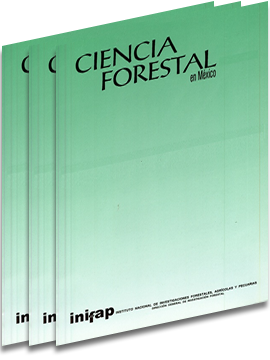PLANTAS MELÍFERAS SILVESTRES DE LA SIERRA PURÉPECHA, MICHOACÁN, MÉXICO
Keywords:
honey flower plants, honeybee flora, Michoacan, nectar, Sierra Purepecha, vegetation typesAbstract
Honey flower plants produce the nectar that bees take and transform into honey, becoming thus a valuable resource far harvesters. This particular flora must be well-known before bee-hives are built or befare it is cultivated through the "artificial bee meadows", since the amount and quality of nectar depends upon the species and the environmental factors in which flowers grow; this study was carried out in the Sierra Purépecha, at the state of Michoacán (19° 20' to 20° 05' N and 101º 30' to 102º 30' W); the area belongs to the Mexican Neovolcanic Axis and it measures about 600,000 ha. Toe purpose of this research was to prepare an inventory of the wild apiarian flora and to provide a brief review of the associated species by describing the vegetation types. Field explorations were made periodically and lasted 18 months during which botanic collections were preformed and surveys were applied. As a result, a list of 60 honey plant species was organized, which includes 51 genus and 19 families; Asteraceae had 22 species (36.66%), Lamiaceae and Leguminosae had six species (10%) and Scrophulariaceae two species (3.3%). The genus with more species were Bidens (4), Salvia (3), while Da/ea, Senecio and Baccharis only had two species.
Downloads
Downloads
Published
How to Cite
Issue
Section
License
The authors who publish in Revista Mexicana de Ciencias Forestales accept the following conditions:
In accordance with copyright laws, Revista Mexicana de Ciencias Forestales recognizes and respects the authors’ moral right and ownership of property rights which will be transferred to the journal for dissemination in open access.
All the texts published by Revista Mexicana de Ciencias Forestales –with no exception– are distributed under a Creative Commons License Attribution-NonCommercial 4.0 International (CC BY-NC 4.0), which allows third parties to use the publication as long as the work’s authorship and its first publication in this journal are mentioned
The author(s) can enter into independent and additional contractual agreements for the nonexclusive distribution of the version of the article published in Revista Mexicana de Ciencias Forestales (for example, include it into an institutional repository or publish it in a book) as long as it is clearly and explicitly indicated that the work was published for the first time in Revista Mexicana de Ciencias Forestales.
For all the above, the authors shall send the form of Letter-transfer of Property Rights for the first publication duly filled in and signed by the author(s). This form must be sent as a PDF file to: ciencia.forestal2@inifap.gob.mx
This work is licensed under a Creative Commons Attribution-Noncommercial 4.0 International license.


